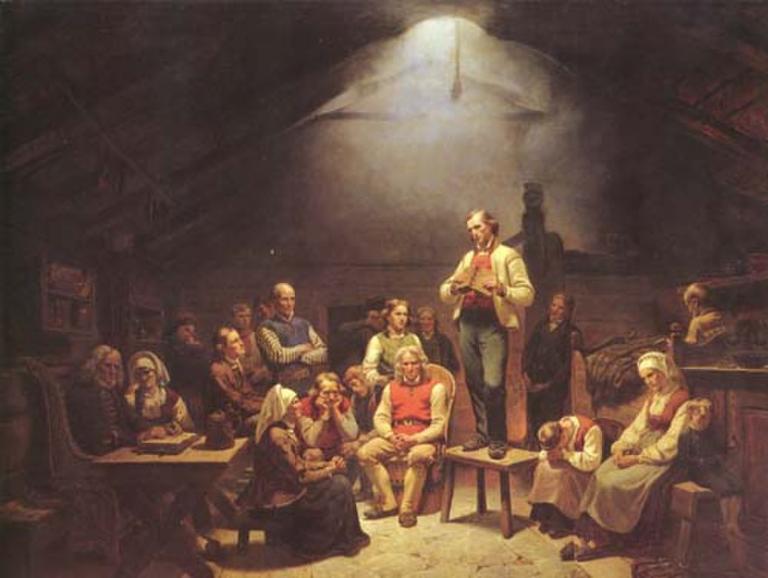
Religion waxes and wanes in a culture and throughout history. It can fade away, but it can also suddenly come back again.
That is one of the takeaways from the American Enterprise study by Lyman Stone that we’ve been discussing this week: Promise and peril: The history of American religiosity and its recent decline.
In addition to giving us something of a three-dimensional profile of the extent of religion in the United States and Western Europe, the study gives data about why religions decline but also what brings religions back.
As we reported from that study, the lowest level of church membership and church attendance in the history of the United States was in the 1780s, when only a third of Americans belonged to any church body and only a fifth of the population was in church on any given Sunday. That’s far worse than today’s supposedly “declining” numbers, of 62% membership and 35% attending.
But after that religious low point at the very outset of our nation came the Second Great Awakening, which began in the 1790s and soon made our forebears the strong Christians we have always assumed them to be.
What changed? Researchers have cited sociological factors. For example, as we blogged about, the American Enterprise study says that the heavy-handed, politically powerful colonial churches created a backlash against faith, whereas their disestablishment and America’s new religious liberties created a climate for faith to flourish again.
But ultimately, bringing back Christianity from times of church decline requires a spiritual “awakening”–or revival, or renewal, or reformation–that has to be seen as the work of the Holy Spirit.
Indeed, such movements often begin outside of the institutional church as such–from the Reformation in the universities to the revivals on the American frontier–before having their effect in the churches.
The Holy Spirit’s work, of course, includes bringing Christians into the task. So it’s legitimate to think, plan, organize, and take actions towards another spiritual awakening. But, as we saw yesterday, gimmicks and simplistic solutions are unlikely to go very far.
One task, of course, is to pray: Christians I met in the Inner Mission organizations of Denmark and Finland told me that they had been praying for revival for years. Now it is happening, they said, not as they expected or as they had been working for, but as Muslim immigrants are coming to Christ.
“We did nothing to make this happen!” they told me. But now their Bible Studies, their classes, and other ministries are full of people coming to them and asking to hear about Jesus. These mission societies, themselves the fruit of an earlier Christian awakening in Scandinavia, are now sending hosts of eager new converts to conservative pastors for baptism and church membership.
Illustration: A Haugean meeting [see Hans Nielsen Hauge, credited with reviving the Christian faith in 19th century Norway] by Adolph Tidemand / Public domain via Wikimedia Commons














